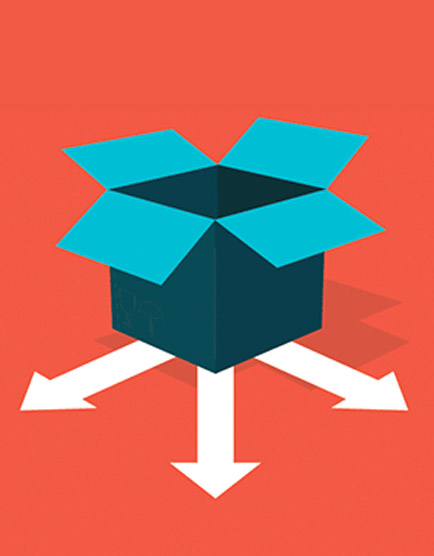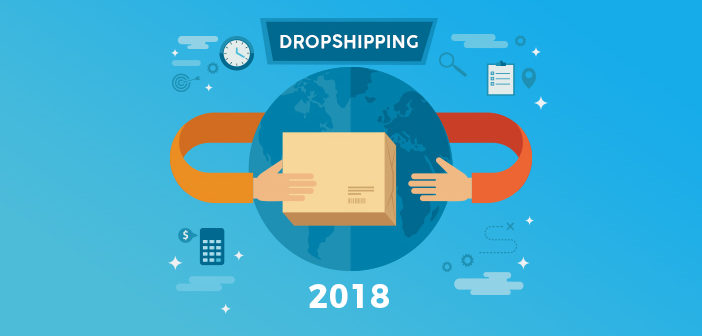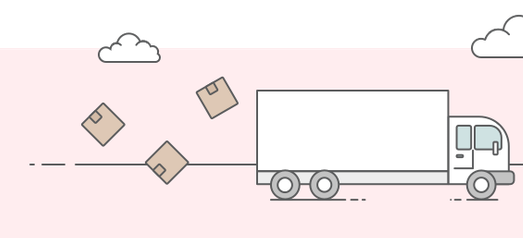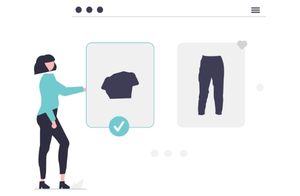Or go to our Shopify Theme Detector directly
What is Dropshipping?
Last modified: October 11, 2023

What is dropshipping? That is a great question. For those of you who are already involved in the world of online retail, you may have heard of this business model or you may even be using it already. But for those of you who are new to this and have zero to almost no experience in this industry, dropshipping may be just a word you have read or have heard being thrown around.
So what exactly is it about dropshipping that makes it so popular in today’s eCommerce space? Well, with a regular brick-and-mortar store or a normal eCommerce shop, there is a lot of work that needs to go into it, not just to make it successful but just to get it up and running. You have to decide things like what kind of inventory you will have and how much of it you need to have. There are also bills to pay for: the rent, phone, employees, maybe delivery trucks, and the list goes on. But with dropshipping the experience of online selling is much more hassle free and can save you a lot of time and money.
So What is Dropshipping and Why Should You Consider It?
Now that we have said what dropshipping isn’t let’s briefly talk about what it is. With dropshipping you will have a website. You can decide if you want to sell one product, several products, or whatever it is you think will bring in business. The difference is that you have minimal to no inventory at all to manage. How’s that you ask? Because your website is where a customer sees a product, puts in his info, and pays for it, but there is a third-party supplier that takes care of the rest, the packaging, the delivery, etc. Now let’s get into more detail about what is dropshipping exactly.
| # | Name | Image | |
|---|---|---|---|
| 1 |

|
AutoDS
|
|
| 2 |
|
Spocket-World Wide Suppliers
|
|
| 3 |

|
Syncee - Global Dropshipping
|
|
| 4 |

|
Printful-Sell Printed and Embroidered Items
|
|
| 5 |

|
Sup Dropshipping
|
|
| 6 |

|
DSers-AliExpress Dropshipping
|
|
| 7 |

|
Zendrop - Dropshipping & POD
|
|
| 8 |

|
Dropshipman: Dropshipping & POD
|
|
| 9 |

|
AO - AliExpress Dropshipping by FireApps
|
|
| 10 |

|
Trendsi - Fashion Dropshipping
|
|
| 11 |

|
CJdropshipping
|
|
| 12 |

|
DropCommerce
|
|
| 13 |

|
Modalyst-Sell Brand Name Products
|
|
| 14 |

|
Ali Orders-Fulfill Orders Easily
|
|
| 15 |

|
Blanka - Private Label Beauty
|
|
| 16 |

|
Dropified-Automate Your Dropshipping Business
|
|
| 17 |

|
ProductPro
|
|
| 18 |

|
Spreadr App
|
|
| 19 |

|
Importify
|
|
| 20 |

|
Inventory Source
|
|
| 21 |

|
Roxie
|
|
| 22 |

|
Fulfillbot: Dropshipping Agent
|
|
| 23 |

|
KakaClo
|
|
| 24 |

|
Oberlo-Get the Best Produtcts for Your Site
|
|
|
Show More
|
|||
Dropshipping
Let’s begin by giving a little background. How does dropshipping work and the general idea of what it is. For those of you who are looking to branch out into the online shopping world. Starting your own dropshipping store is a very good option for beginners. And why is that, you ask? Because with a dropshipping site you do not have to actually deal with the inventory, a third party manages the inventory and your customers’ orders and is responsible for getting it to them. Your dropshipping site is the connection between the customer and the product they want. Now starting this kind of business, even though it is easier than managing a normal eCommerce, can still seem like a daunting task. Which is why we have written this article, to make the process of dropshipping a little clearer.
Benefits of Having a Dropshipping Site
Well, there are actually many different benefits to having your own dropshipping site as opposed to operating a standard eCommerce site.
The first positive thing about this kind of retail method is that the setup for a dropshipping website is easy. Getting your dropshipping site up and running just takes 3 steps. First you will need to find a supplier, set up your store’s site, and then start selling your products! Since it is so simple to get started, dropshipping is a very good choice for those of you who are just getting started in the online retail space.
Another benefit is that you will not have to worry about large overhead costs. Since the business owner of a dropshipping website does not need to have any inventory he will therefore not need to worry about having to rent a warehouse or some space to house the products. And of course he will not need to pay for the things that go along with renting actual space, like paying for electricity, a phone bill, etc. These things could add up to a huge expense so not having to deal with that will save you a lot of money.
The risk of using dropshipping as your business model is low. Since you didn’t buy any stock, if your business doesn’t sell anything it doesn’t really matter because you won’t be losing any money if you make no sales.
A dropshipping site can be run from anywhere. Since it is all digital, you can run your dropshipping website from wherever you like as long as you have internet access. You can go on vacation for a few weeks or relocate to Europe, etc. You don’t have a warehouse or stock to manage or employees and bills to pay so there is no hassle or things that require you to be physically nearby.
The options for products you can sell are vast. As you do further research into dropshipping you will see that there is a dropship supplier for almost anything that you might want to sell. You can focus on one product or sell many different ones, whatever works for you.
You will have more time and resources to focus on your business. With a normal retail business, you would have to put in more work and resources in order to expand and grow your business. But with dropshipping all you have to do is get more orders to send out to your third party suppliers and let them do all of the heavy lifting while you bring in more profit. Since dropshipping is so hands off, you will have plenty of time to focus on growing your business.
And the last benefit to using dropshipping as your business model is that you will have less of a loss on damaged goods. Since the products are shipped direct to the customer from the suppliers there are fewer shipping steps in between which dramatically reduces the risk of products that are damaged while being moved from one place to another.
Downsides to Dropshipping
While we have listed some great positives to dropshipping, it does have a few negatives to it.
The first is that the profit margins are lower in comparison to sourcing from a manufacturer or wholesaler. Depending on what kind of product you are selling and location, the suppliers and vendors can charge your more money for dropshipping products which can hurt your profit
There is also complete liability if something goes wrong, even if it as the fault of the supplier. The customers are purchasing their items from the retailer’s website so even if the supplier does something wrong, it is still the retailer’s fault since they represent the brand.
Another con is that the brand has much less control. With the dropshipping model, retailers hardly ever have the opportunity to control how their brand is presented since the delivery and fulfillment are controlled and operated by the supplier. This can be a hug downside because customer satisfaction can rely heavily on personalized packaging and branding of the products. There may be some suppliers out there who are willing to do these extra things but you will probably have to pay for it.
Problems can occur because of complexity with shipping. Selling many different kinds of products may sound like a good idea to increase your sales but this could actually be a huge negative if the retailer has several suppliers for these products. Suppliers may charge different shipping costs depending on different factors such as: location, type of product, etc. If one of your customers orders different products that ship from different suppliers then the retailer will have to pay the shipping costs separately and this will then be transferred to the customer which could negatively affect conversion rates which will in turn hurt your profits.
A lot of competition. Since dropshipping it such an attractive choice for a business model it makes it very popular so there are more retailers in every niche. Unless a retailer is catering to an incredibly specific niche or industry, he will be up against a lot of competition.
Keeping track of inventory. It is incredibly difficult to keep track of the amount of inventory the supplier has. Miscommunications are likely to happen which will cause cancellations or could lead to items being put on back order. This issue can be more easily managed with software but that is an added expense you will need to take into account.
Who Is/Isn't Dropshipping For
Since dropshipping is relatively easy to set up, it is a great business model for those just starting out in the online retail market. Since it has such a low risk and low investment, it is more attainable and feels like less of a risk. Dropshipping is also a great option for someone that is already a store owner and has an inventory but are looking to test certain products in the market to see how they do in sales before buying a lot. These are the kind of people who would be a great fit for starting a dropshipping website. Now let’s see who would not be such a good fit.
A brand focused entrepreneur should not use a dropshipping website. Trying to build a brand and use a dropshipping business model is incredibly difficult because there are so many elements of the customer experience that you will have no control over. Since you will have so many things out of your control, it will be nearly impossible to build a strong brand through a dropshipping business.
A margin focused entrepreneur will also not work well with dropshipping. There are very thin margins with the dropshipping business model, gross margins tend to be somewhere around 10-20%. Once you have paid for things like email services, app fees, credit card transaction fees, etc. you will only be left with a few percent.
Marketers who are not so creative. Most manufacturers have a certain goal of how much of their sales needs to be from direct to consumer sales through their eCommerce site, usually it is around 30%. So what does this mean? This means that if you are selling their product then you are competing directly with your own supplier who is able to have much higher margins than you on the same exact products. So competing directly against them is pretty much pointless because they will almost always win. This is where the creativity would need to come in because if you are going to beat your own supplier you need to think outside of the box and find a way to exploit the channels that the supplier isn’t using in order to acquire different customers.
Finding the Right Products to Sell via Dropshipping
In order to have any kind of successful retail business you have to fin the right products to sell and this is incredibly important for dropshipping. The best strategic way to go about figuring it out is to come up with a list of a few different products that will sell well (based on research, numbers, etc.) via the dropshipping model. The following is a list of certain elements that will help you to decide if a product is right for dropshipping.
Retail price. The retail price and the wholesale price play very important roles in dropshipping. You need to find the right price to charge customers so you can optimize sales. For example, lower prices may encourage sales but your profit margin per product may be smaller but higher prices may lead to fewer sales.
Size/weight. Of course, depending on how heavy or light and how big or small your product is will determine how much the shipping will be in addition to how much effort is needed in order to package it and get it to the customer. So therefore, it the smaller and lighter products will give you a better profit margin.
How durable are your products. If what you sell is disposable or renewable you have a greater chance that your customers will make repeat orders which will obviously increase your sales.
Spocket
Dropshipping Mistakes to Look Out For
Many common mistakes for dropshipping businesses are:
- Deciding which products to sell based on your personal likes and dislikes.
- Selling knockoffs instead of the real deal.
- Deciding to sell a product because other people are selling it.
These may seem fairly simple but they are mistakes that people do make. So if you are serious about making your dropshipping site a success you should take all of these things into account.
Maximizing the Benefits of Dropshipping
Strategic Supplier Partnerships
We’ve always stressed the significance of strong supplier relationships in our years of experience in digital marketing and e-commerce.
A strategic partnership with suppliers is crucial to improving the dropshipping experience, with retailers focusing on customer relationships while suppliers handle inventory and shipping.
The quality of the supplier directly impacts the customer experience. Always be meticulous in vetting suppliers, ensuring they are reliable, reputable, and committed to quality and timely delivery.
This division of labor is a win-win but requires seamless communication and collaboration for customer satisfaction.
Overcoming Challenges
Dropshipping, like any business model, has its challenges.
High competition, low margins, and limited control over inventory and shipping can be mitigated by prioritizing customer experience, offering unique value, and continuously optimizing operations.
Is Dropshipping Right for You?
This essential question prompts reflection on dropshipping’s suitability for their specific circumstances.
Throughout our extensive journey, we’ve encountered entrepreneurs from diverse backgrounds, each adapting the model to their unique needs and market conditions. It’s a versatile model but requires a strategic approach to maximize its potential.
Factors to Consider When Dropshipping
Choosing the Right Niche
A well-chosen niche can make the difference between a thriving and a struggling dropshipping business.
Conduct thorough market research to identify niches with high demand and low competition, and consider products that align with your passion or expertise for increased engagement and authenticity.
Customer Service Excellence
Customer service is the cornerstone of any successful e-commerce business. In the world of dropshipping, where retailers have limited control over inventory and shipping, exceptional customer service becomes even more critical.
Invest in training, develop systems, and implement technologies to ensure customers feel valued, heard, and satisfied. Addressing inquiries, resolving issues, and fostering relationships are integral to building loyalty and trust.
Dropshipping with Shopify
Operational Ease and Flexibility
Shopify underscores the operational ease and flexibility of dropshipping. The platform’s features facilitate efficient order processing and fulfillment, enabling entrepreneurs to focus on marketing and customer service.
Product Diversity
One of the aspects we love about dropshipping on Shopify is the wide selection of products to sell. We can leverage this to test and introduce new products without the risk of unsold inventory.
Shopify’s ecosystem supports this flexibility, making it easier for retailers to adapt to market trends and consumer preferences.
Scaling Your Business
Scaling a business is a critical phase, and Shopify’s infrastructure supports seamless scaling.
We’ve witnessed small home-based operations transform into thriving e-commerce enterprises. The dropshipping model, coupled with Shopify’s robust platform, facilitates this growth, handling increased order volumes without compromising on customer experience.
Conclusion: What is Dropshipping?
So hopefully you now know exactly “what is dropshipping” and can figure out if it makes sense for you as a business model. It is important to take everything we discussed into account before getting your dropshipping business started. While it is not such a big commitment to start a dropshipping business it would be unfortunate for you to get your business set up and then not take into account all of these factors and have it fail. So seriously consider all of these details and then decide if this is the right eCommerce venture for you.
Keep on reading about Dropshipping on Shopify. For example Getting Started with Shopify Dropshipping and 15 Best Shopify Dropshipping Themes [Apr, 2024]. Both part of our Shopify Dropshipping Apps and Shopify Dropshipping Themes lists. You can read more about Dropshipping on Shopify with our ultimate Dropshipping on Shopify guide.
-
What are the tax implications of dropshipping?
Understand tax obligations in your country and where your suppliers are located, and consider seeking professional tax advice to comply with regulations.
-
How can I make my dropshipping store stand out?
Focus on niche markets, offer unique products, provide exceptional customer service, and invest in effective marketing strategies to attract and retain customers.
-
How do I handle customer complaints in dropshipping?
Address complaints promptly, offer solutions or compensations, and use feedback to improve service and prevent future issues.










 PageFly Landing Page Builder
PageFly Landing Page Builder  Shopify
Shopify  SEMrush
SEMrush  Website Maintenance
Website Maintenance  UpPromote
UpPromote